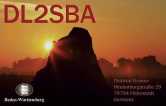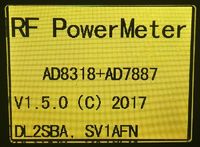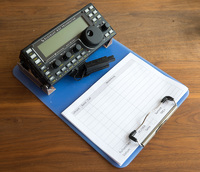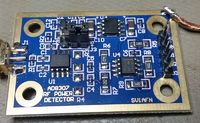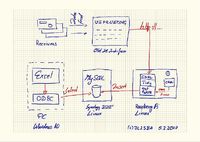I've developed a new firmware for my RF Powermeter. In this firmware, the user can now program for six calibration points the factors for the polynimial regression functions.
Therefor I've developed a JAVA GUI application for downloading these floating point values to the device.
*** CAUTION ***
All stuff described in this post is ONLY running on an Arduino which runs the OptiBoot bootloader. The EEPROM capability of the OptiBoot bootloader is needed for the features of firmware V1.7.1
I described here a way how to flash the OptiBoot loader on an Arduino UNO clone. For this you need an ISP or a second Arduino to act as an ISP.
